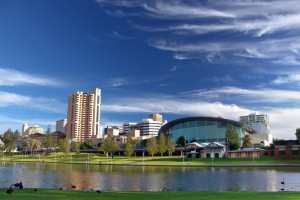14-Nights Outback Adventure

14-Nights Outback Adventure
Australia
Trafalgar
Vacation Offer ID 1556189
Reference this number when contacting our travel specialist.
Trafalgar
Outback AdventureLooking for the best of the Outback Look no further than this two-week journey into dazzling landscapes, rich Aboriginal culture, and classic local characters from the Red Centre to the lush, tropical Top End. Just like its name, this is the Outback Adventure that ticks every box.
Dining Summary
- 10 Dinner (D)
- 14 Breakfast (B)
- Be My Guest experience: The Falzon Family
- Alice Springs: Meet the Falzon family, who have entertained and informed visitors for over 20 years in the outback of Australia, for a Be My Guest Outback Dinner and Show. You will hear stories of ecology, culture and astronomy and learn about the sustainable lifestyle the family has created.
- Alice Springs: Join a local Aboriginal guide to learn about the culture and traditions of the Arrernte People at the Alice Springs Desert Park.
- Kakadu National Park: Get up close to Aboriginal rock art dating some 20,000 years in Kakadu National Park.
- MAKE TRAVEL MATTER® Experience: Jawoyn Aboriginal Cultural Experience
- Flinders Ranges: Your stay at Wilpena Pound Resort directly assists the future of the local Aboriginal people as well as the environment.
- Adelaide Central Markets, Coober Pedy, Alice Springs Desert Park, and Nitmiluk National Park
- Adelaide and Alice Springs
- Sunset & Sunrise at Uluru, Walpa Gorge at Kata Tjuta, and Kings Canyon
- View an opal demonstration in Coober Pedy, sunset and sunrise at Uluru, crocodiles and birdlife, and Aboriginal rock art at Ubirr
- See vast cattle properties, and Karlu Karlu (Devils Marbles)
- Cruise on Nitmiluk Gorge, and on Yellow Water Billabong
- Coober Pedy: A family owned property that brings Coober Pedy dugout living to life, the Desert Cave Hotel offers guests an opportunity to gain insights into the town's opal mining heritage and the unique opportunity to experience life underground.
- Uluru: Discover the stunning heart of the Red Centre at Ayers Rock Resort. Revealing natural beauty of this unique landscape, the accommodation offer incredible views of towering gums, flowering native shrubs and flowing red dunes.
Whats Included
- An expert Travel Director and professional Driver
- Cherry-picked hotels, all tried and trusted
- Porterage where hotels provide this service
- Breakfast daily and up to half of your evening meals
- Must-see sightseeing
- All land transport shown. All transfers shown
- Luxury air-conditioned coach with Wi-Fi in most countries or alternative transportation (such as rail journeys)
- Optional Experiences and free time
Featured Destinations
Valid Date Ranges
Trip prices are per person, land only, based on double occupancy and reflect applicable discounts. Trip prices and discounts are subject to change. Airfare is additional. Tour prices, dates and itineraries are correct at the time of the website going live, however are subject to confirmation at the time of booking. Other restrictions may apply.
All fares are quoted in US Dollars.

 800.347.4447
800.347.4447

